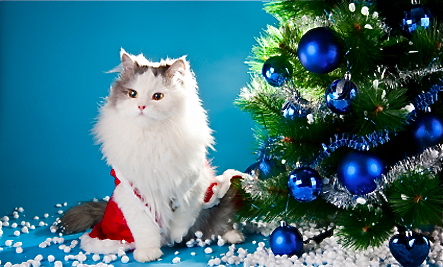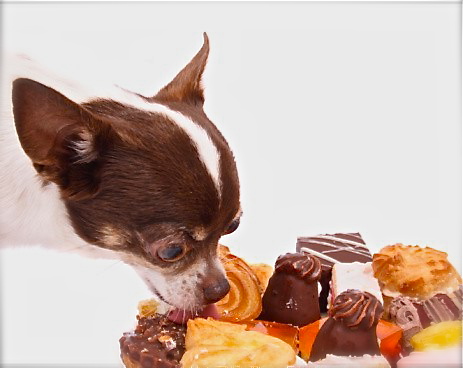Here are great tips about having a healthy and safe cat-friendly holiday!
Tip 1
Remember that ribbons and tinsel are tempting toys for a curious feline. But if your cat swallows these objects, they can cause serious problems if they get “stuck” in the intestinal tract or wrapped around your cat’s tongue. Keep these types of decorations out of the reach of your cat.
Tip 2
If you put up a Christmas tree for the holidays, your cat may be tempted to taste the water at its base. Unfortunately, that same water may be stagnant or filled with fertilizers, preservatives, or other chemicals which are unsafe for your cat.
Tip 3
Many of the holiday plants that are popular this time of year are dangerous for our cats. Though poinsettias are generally over-rated in terms of their potential for toxicity, they can still cause mild intestinal upset for your cat. More importantly, holly can be very toxic, as can some types of mistletoe. In addition, lilies can be deadly for your cat and are often found in holiday flower arrangements. Do not leave these plants where your cat can chew on them.
Tip 4
Be careful about sharing your favorite holiday treats with your cat. Chocolate and many other types of foods can be dangerous.
Tip 5
Scented candles and potpourri are popular holiday decorations as well. Though they make our homes smell wonderful, they may be dangerous for curious cats. Even worse, an open flame can easily become a fire hazard if knocked over by your cat.
Tip 6
Many of the decorations we enjoy during the holidays are electric, and the cords can become a target for a playful cat. Biting into an electrical cord can pose an electrocution threat for your cat. Be cautious of dangling cords and place them where your cat cannot access them.
Tip 7
Be sure to spend a little extra time with your feline friend during the holidays. A little extra attention from you may help ease some of the tension of the holidays for your cat.
Tip 8
Make certain your cat has a place to retreat when company arrives if he feels the need. Your cat’s safe place should have a litter box, a food and water station, and a soft comfortable place to rest. It should be a private area where guests are not allowed.
Paying attention to small details can make a big difference in keeping your cat safe and healthy during the holidays, and will help both you and your cat weather the holiday season and start the new year on a happy note.





